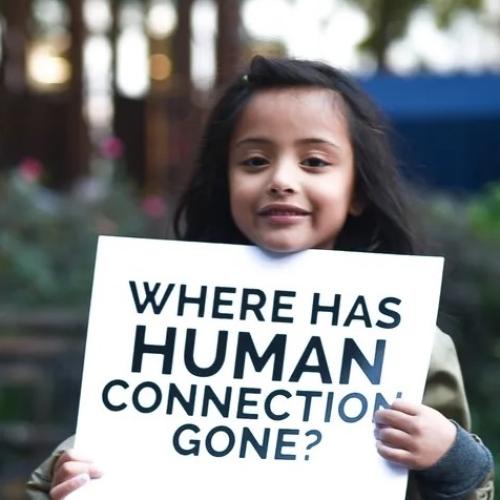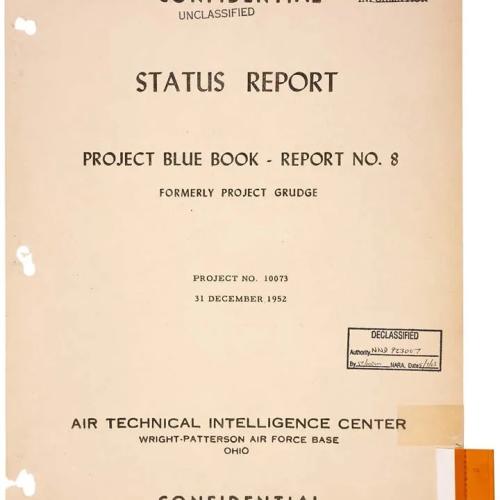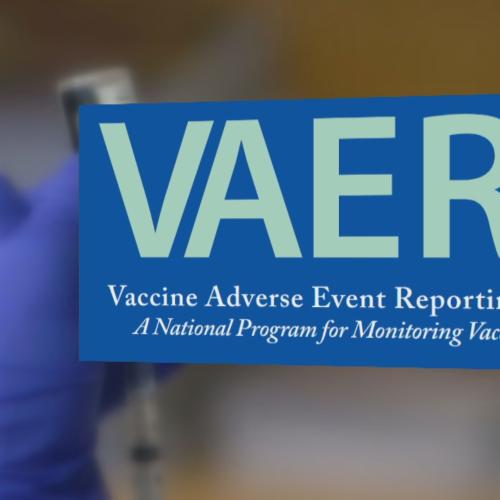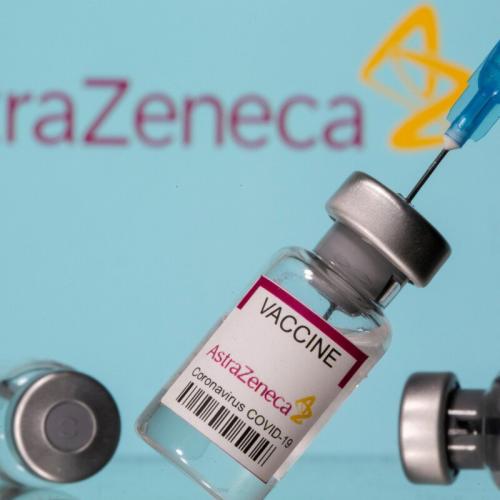Inspiring: Animal Wonders News Stories
Below are key excerpts of inspiring news articles on animal wonders from reliable news media sources. If any link fails to function, a paywall blocks full access, or the article is no longer available, try these digital tools.
For further exploration, delve into our Inspiration Center.
Hundreds of ant species farm fungi today, and studies of ant evolution suggest the adaptation goes back tens of millions of years. Now, scientists have sharpened the picture by bringing in the fungal family tree as well. They pinpoint a date for the origins of the partnership and suggest a surprising catalyst: the asteroid that killed the dinosaurs 66 million years ago. Since ants’ fungal gardens were first described 150 years ago, entomologists have uncovered 247 species of ants that tend them and rely on this fungal crop to survive. Researchers surmise that the ants descend from a common ancestor that later evolved into separate species nurturing different types of fungi. The ant and fungal taxa involved in farming both arose about 66 million years ago, which coincides with the massive asteroid strike that drove nonavian dinosaurs and many other species extinct. That cataclysmic impact produced lingering clouds of debris that shut down photosynthesis across the planet for several months, possibly even years. Researchers suggest ants that had already developed a loose relationship with fungi were ready to take advantage of this newly abundant source of food. For the first few million years, the ants tended fungal species also found in the wild. Then, about 27 million years ago, a subset of ants completely domesticated their fungal cultivars, just as humans have done with most of our staples, which are now remote from their wild roots.
Note: Explore more positive stories like this on animal wonders.
Following someone’s gaze may seem like a simple act, but it has profound implications for the evolution of intelligence. And humans are far from the only animals that do it. A recent study of bottlenose dolphins in the journal Heliyon adds to previous research identifying the ability to follow the gazes of members of other species — a visual and cognitive trick that may relate to the development of empathy — across a wide range of mammals, not just humans and our fellow primates. What’s even more interesting is to trace this ability through not just the mammal family but beyond, to reptiles and birds — and perhaps back as far as the Jurassic period. In general, by identifying important objects in their environment, an animal’s ability to follow the gaze of another, including another species, may form a basis for advanced social cognition, paving the way for cooperation and empathy. One such high level type, “geometrical gaze following,” occurs if you block the thing that the other is looking at so the subject can’t see it, so that they will physically reposition themself to see what others are seeing. Geometrical gaze following isn’t even seen in human children before eighteen months of age – and yet wolves, apes and monkeys, and birds of the crow (corvid) and starling genuses have all been found to engage in it. Looking at which living species show evidence of advanced gaze following and which don’t suggests that even the more advanced type ... evolved back in the time of dinosaurs.
Note: Read about the world's biggest eye contact experiment and explore a powerful social experiment in Australia where people rekindle human connection through a minute of silent eye contact. For more inspiring news related to this article, check out our news archive on animal wonders.
It sounds like a scene from a Spielberg film: an injured worker undergoes an emergency amputation, performed by one of her colleagues, allowing her to live another day. But this is not a human story – it is behaviour seen in ants. While it is not the first time wound care has been seen in ants, scientists say their discovery is the first example of a non-human animal carrying out life-saving amputations. Surprisingly, the insects appear to tailor the treatment they give to the location of injury. “The ants are able to diagnose, to some extent, the wounds and treat them accordingly to maximise the survival of the injured,” said Dr Erik Frank, from the University of Lausanne. Writing in the journal Current Biology, Frank and colleagues report how they cut Florida carpenter ants (Camponotus floridanus) on their right hind limb, then observed the responses of their nest mates for a week. “Nest mates would begin licking the wound before moving up the injured limb with their mouthparts until they reached the trochanter. The nest mates then proceeded to repeatedly bite the injured leg until it was cut off,” the team wrote. By contrast, no amputations were observed for the nine ants with injuries on their tibia, or lower leg. Instead, these ants received only wound care from their nest mates in the form of licking. “It is another example of an adaptation in the lives of social insect workers in which workers help each other to work for their colony and to help their colony,” [Prof Francis Ratnieks at the University of Sussex] said. “Such as when a worker honeybee makes a waggle dance to direct a nest mate to food, or when a worker sacrifices its life in defence of the colony, or here where workers amputate the limbs of an injured or infected worker.”
Note: Explore more positive stories like this about animal wonders.
If new evidence emerges of animals’ abilities to feel and process what is going on around them, could that mean they are, in fact, conscious? We now know that bees can count, recognise human faces and learn how to use tools. Prof Lars Chittka of Queen Mary University of London has worked on many of the major studies of bee intelligence. "If bees are that intelligent, maybe they can think and feel something, which are the building blocks of consciousness," he says. Prof Chittka’s experiments showed that bees would modify their behaviour following a traumatic incident and seemed to be able to play, rolling small wooden balls, which he says they appeared to enjoy as an activity. A government review led by Prof Birch in 2021 assessed 300 scientific studies on the sentience of decapods and Cephalopods, which include octopus, squid, and cuttlefish. Prof Birch’s team found that there was strong evidence that these creatures were sentient in that they could experience feelings of pain, pleasure, thirst, hunger, warmth, joy, comfort and excitement. The conclusions led to the government including these creatures into its Animal Welfare (Sentience) Act in 2022. Prof [Kristin] Andrews was among the prime movers of the New York Declaration on Animal Consciousness signed earlier this year, which has so far been signed by 286 researchers. The short four paragraph declaration states that it is “irresponsible” to ignore the possibility of animal consciousness.
Note: Explore more positive stories about animal wonders and the amazing natural world.
A penguin has become a ‘guide-bird’ for a fellow African Penguin with poor eyesight, escorting her around their enclosure to get food and build confidence. The animal helper named ‘Penguin’ has bonded with ‘Squid’ the three-year-old that suffers from cataracts, a debilitating condition that clouds the lens of the eye. Squid is often disoriented during busy feeding times and relies on Penguin’s “unwavering calmness”. Penguin has become Squid’s beacon, guiding her around the enclosure and acting as her ‘eyes’. The hand-reared birds are now inseparable—to the delight of their human keepers at Birdworld who are sharing their remarkable relationship. “The intuitive behavior observed between Penguin and Squid has revealed a remarkable level of empathy and understanding, showcasing the profound connections that can form within the animal kingdom,” said Polly Branham a spokesperson for the aviary in Surrey, England. Having been nurtured within the colony, Squid honed her skills alongside her peers—learning the essence of being a penguin—but she used to be quite anxious about approaching the fish bucket at feeding time. “The excitement of the other penguins created a more unpredictable environment, and she would shy away from this for fear of getting caught in the crossfire of beaks,” explained Branham. “That is how Penguin has been such an enormous help to her. “His stability was something she could rely on.”
Note: Explore more positive stories like this in our comprehensive inspiring news articles archive focused on solutions and bridging divides.
The rich tapestry of life on Earth is fraying, due in large part to human-caused habitat loss and climate change. As more species disappear, researchers are racing to track this global decline in biodiversity to understand its consequences and counteract it through conservation initiatives. Those efforts rely on accurate animal monitoring, which can be difficult, time-consuming and costly. Now, in new research published in the journal iScience, researchers present evidence for a new low-cost, noninvasive tool that can be used to monitor animals: spiderwebs. They're using environmental DNA, or eDNA, which is simply different creatures' DNA just lying around in the environment. Previous work showed that webs are good sources of insect DNA, including what spiders are gorging on. But [evolutionary biologist Morton] Allentoft and [student Josh] Newton wanted to see whether the webs were also trapping DNA from vertebrate animals. So Newton ... collected spiderwebs. Back in the lab, Newton amplified the small amounts of DNA from the webs. They were filled with genetic material from animals. "It was wonderful," says Allentoft. "We could see these kangaroos [and] wallabies." There were nine other mammals, 13 species of birds, the motorbike frog and the snake-eyed skink. In other words, the technique worked. It represents a new way of tracking animal biodiversity and alerting us when we should intervene to conserve native species.
Note: Explore more positive stories like this in our comprehensive inspiring news articles archive focused on solutions and bridging divides.
Next time you’re irritated that ants have gotten into your kitchen, you might take a moment to consider their extraordinary powers of perception. These tiny animals can detect markers of illness, such as cancer. In fact, ants are just one of many creatures whose senses can register signs of human disease: dogs, rats, bees, and even tiny worms can as well. The silky ant, Formica fusca, a common species found throughout Europe, can be taught to identify the scent of breast cancer in urine. Research from the University Sorbonne Paris Nord in France published this year in Proceedings of the Royal Society B shows ants can learn to distinguish between the scent of urine derived from mice carrying human breast cancer tumors from that of healthy mice. Ants and other animals pick up signs of disease by perceiving various volatile organic compounds, or VOCs. These chemicals are produced in a variety of ways and can be found in exhaled breath, and in sweat, urine, and blood. Diseases can change the VOCs we emit, resulting in giving off a different odor. By placing a sugar reward near the cancer sample the ants learned to seek out that scent, a process called operant conditioning. Dogs can be trained to smell several types of cancers, including melanoma, breast and gastrointestinal cancers and some infectious diseases in humans, including malaria and Parkinson’s disease. They can also smell infectious disease in other animals, including chronic wasting disease, which affects the brains of deer and can be fatal.
Note: Explore more positive stories like this in our comprehensive inspiring news articles archive focused on solutions and bridging divides.
People seem to love nothing more than anthropomorphizing our non-human counterparts in nature. These videos might make us giggle, but what about the creatures that star in them, can they laugh? The answer, according to a new paper studying animals at play, may be yes—to the tune of some 65 species that researchers pegged as “laughing” during bouts of playful activity, reports Mindy Weisberger for Live Science. “This work lays out nicely how a phenomenon once thought to be particularly human turns out to be closely tied to behavior shared with species separated from humans by tens of millions of years,” says Greg Bryant, a cognitive scientist at the University of California, Los Angeles and co-author of the study. Most of the 65 species identified by the study, which was published last month in the journal Bioacoustics, were mammals, such as primates, foxes, killer whales and seals, but three bird species also made the list. For animals, the researchers suggest, a laughing noise may help signal that roughhousing, or other behavior that might seem threatening, is all in good fun. “[Some actions] could be interpreted as aggression. The vocalization kind of helps to signal during that interaction that 'I'm not actually going to bite you in the neck. This is just going to be a mock bite,'” [said] Sarah Winkler ... the paper’s lead author. “It helps the interaction not escalate into real aggression.” Many of the animal laughs identified by the study sound nothing like a human chuckle. For example, Rocky Mountain elk emit a kind of squeal.
Note: Explore a treasure trove of concise summaries of incredibly inspiring news articles which will inspire you to make a difference.
One of the world’s most isolated aquatic mammals, Arctocephalus philippii, can tolerate high levels of cadmium, as well as other metallic pollutants, without suffering ill effects. A. philippii is the second smallest species of fur seal and lives only on the Juan Fernández archipelago and one or two nearby islands in the Pacific Ocean, hundreds of miles off the coast of Chile. By the 19th century, the species had disappeared and was believed to be extinct until, in the 1960s, a small colony was found in a cave on the island. Since then, the Juan Fernández seal, which has become a protected species, has slowly recovered and has a population of around 80,000. “We collected samples of their faeces and found they contained extremely high levels of cadmium and other elements such as mercury,” said Constanza Toro-Valdivieso of Cambridge University’s conservation research institute. “The discovery was very surprising,” she said. “Cadmium is poisonous to mammals but somehow these seals were processing it and passing it through their digestive systems and seem to be suffering little harm in the process.” High levels were found not only in its faeces but in the bones of seals that had died of natural causes. The researchers also found high levels of silicon in their bones, which may be offsetting the impact of cadmium, they suggest. “The discovery that these animals appear to tolerate high levels of cadmium in their bodies has important medical implications,” said Toro-Valdivieso. “These animals have a lot to tell us.”
Note: Explore a treasure trove of concise summaries of incredibly inspiring news articles which will inspire you to make a difference.
When Stephen Buchmann finds a wayward bee on a window inside his Tucson, Arizona, home, he goes to great lengths to capture and release it unharmed. This March, Buchmann released a book that unpacks just how varied and powerful a bee’s mind really is. The book, What a Bee Knows: Exploring the Thoughts, Memories and Personalities of Bees, draws from his own research and dozens of other studies to paint a remarkable picture of bee behavior and psychology. It argues that bees can demonstrate sophisticated emotions resembling optimism, frustration, playfulness and fear, traits more commonly associated with mammals. Experiments have shown bees can experience PTSD-like symptoms, recognize different human faces, process long-term memories while sleeping, and maybe even dream. Approximately one-third of the American diet, including many fruits, vegetables and nuts, relies on bees for pollination. In the past, bee research has focused on their role in crop pollination, but the work being pioneered by Buchmann and his contemporaries could force an ethical reckoning with how the animals are treated. Can large-scale agriculture and scientific research continue without causing bees to suffer, and is the dominant western culture even capable of accepting that the tiniest of creatures have feelings, too? Buchmann hopes an ethical shift will happen as details about the emotional lives of invertebrates – especially bees – are shared with the public.
Note: Explore a treasure trove of concise summaries of incredibly inspiring news articles which will inspire you to make a difference.
For the past couple of years, I’ve been working with researchers in northern Greece who are farming metal. They are experimenting with a trio of shrubs known to scientists as “hyperaccumulators”: plants which have evolved the capacity to thrive in naturally metal-rich soils that are toxic to most other kinds of life. They do this by drawing the metal out of the ground and storing it in their leaves and stems, where it can be harvested like any other crop. As well as providing a source for rare metals – in this case nickel, although hyperaccumulators have been found for zinc, aluminium, cadmium and many other metals, including gold – these plants actively benefit the earth by remediating the soil, making it suitable for growing other crops, and by sequestering carbon in their roots. Hyperaccumulators are far from being the only non-humans that we might learn from. Physarum polycephalum, a particularly lively slime mould, can solve the “travelling salesman” problem – a test for finding the shortest route between multiple cities – faster and more efficiently than any supercomputer humans have devised. Spiders store information in their webs, using them as a kind of extended cognition: a mind outside the body entirely. A new conception of intelligence is emerging from scientific research: rather than human intelligence being unique or the peak of some graduated curve, there appear to be many different kinds of intelligence with their own strengths, competencies and suitabilities.
Note: This was written by James Bridle, an artist and technologist who was able to paralyze a self-driving car using salt and road markers. For more on his work, check out his fascinating perspective on how artificial intelligence technologies could be designed based on cooperation and relationships naturally reflected in living systems, as opposed to competition and domination.
How giant African rats are helping uncover deadly land mines in Cambodia
September 10, 2019, PBS
https://www.pbs.org/newshour/show/how-giant-african-rats-are-helping-uncover...
From Angola to the former Yugoslavia, land mines are a lethal legacy of wars over long ago. Cambodia is among the most affected countries, with millions of buried explosives that kill and maim people each year. Now, an organization is deploying an unexpected ally to find mines: the giant pouch rat, whose sharp sense of smell can detect explosives. Mark Shukuru is head rat trainer in Cambodia for the Belgian non-profit APOPO. He is from Tanzania, where this species is also native, and he learned early that they have some of the most sensitive noses in the animal kingdom. Each comes out of a rigorous program in Tanzania that trains them to distinguish explosives from other scents. Each time they sniff out TNT buried in this test field, a trainer uses a clicker to make a distinct sound, and they get a treat. Since 2016, APOPO's hero rats have found roughly 500 anti-personnel mines and more than 350 unexploded bombs in Cambodia. They're the second animal to be deployed in mine clearance. Dogs were first. Animals can work much faster than humans, although, when the land is densely mined, metal detectors are considered more efficient. APOPO plans to bring in some 40 more rats to expand the force and replace retirees. Each animal works about eight years, and then lives out the rest of its days alongside fellow heroes, all working toward the day when they can broadcast to the world that Cambodia has destroyed the last unexploded bomb.
Note: Don't miss the cute video of these hero rats at work, available at the link above. Explore a treasure trove of concise summaries of incredibly inspiring news articles which will inspire you to make a difference.
Ants can be more effective than pesticides at helping farmers produce food, according to new research. They are better at killing pests, reducing plant damage and increasing crop yields, according to the first systematic review of ants’ contributions to crop production. Ants are generalist predators and hunt pests that damage fruits, seeds and leaves, leading to a drop in crop yields. A greater diversity of ants generally provides more protection against a wider range of pests, the study found. The analysis looked at 17 crops, including citrus, mango, apple and soya bean in countries including the US, Australia, the UK and Brazil. “In general, with proper management, ants can be useful pest controls and increase crop yield over time. Some ant species have similar or higher efficacy than pesticides, at lower costs,” researchers wrote in the paper published in Proceedings of Royal Society B. There are more ants than any other insect, making up half of the planet’s insect biomass. There are at least 14,000 known species of ant, with many more likely to remain unknown. Citrus growers in China have used ants in farming for centuries, and the insects have also been used to help control forest pests in Canada, cocoa pests in Ghana and crop pests in Nigeria. Dr Patrick Milligan, from the University of Nevada Pringle Lab ... said the findings were “both heartening and not at all surprising”. He added: “They offer a neat and tidy description of ant-derived benefits that are ubiquitous across ecological and agricultural systems.
Note: Explore a treasure trove of concise summaries of incredibly inspiring news articles which will inspire you to make a difference.
A plump larva the length of a paper clip can survive on the material that makes Styrofoam. The organism, commonly called a “superworm,” could transform the way waste managers dispose of one of the most common components in landfills, researchers said, potentially slowing a mounting garbage crisis that is exacerbating climate change. In a paper released last week in the journal of Microbial Genomics, scientists from the University of Queensland in Brisbane, Australia, showed that the larvae of a darkling beetle, called zophobas morio, can survive solely on polystyrene, commonly called Styrofoam. The findings come amid a flurry of research on ways bacteria and other organisms can consume plastic materials, like Styrofoam and drinking bottles. Now, the researchers will study the enzymes that allow the superworm to digest Styrofoam, as they look to find a way to transform the finding into a commercial product. Industrial adoption offers a tantalizing scenario for waste managers: A natural way to dispose and recycle the Styrofoam trash that accounts for as much as 30 percent of landfill space worldwide. Among plastics, Styrofoam is particularly troublesome. The material is dense and takes up a lot of space, making it expensive to store at waste management facilities, industry experts said. The cups, plates and other materials made from it are also often contaminated with food and drink, making it hard to recycle. Polystyrene fills landfills, where it can often take 500 years to break down.
Note: Explore a treasure trove of concise summaries of incredibly inspiring news articles which will inspire you to make a difference.
A professional diver has revealed how she uses a little known technique to placate sharks so she can remove hooks from their mouths. Italian-born Cristina Zenato, 47, who is known as 'the shark dancer' is often filmed on the ocean floor with 8ft sharks playing around her and nestling into her knees. The conservationist, who lives on Grand Bahama, has perfected the technique of relaxing the sharks, which is part of her efforts to save them by removing hooks that are caught in their fins. She induces the 'tonic' state in the shark using a little-known technique of rubbing the ampullae of Lorenzini - the name given to hundreds of jelly-filled pores around the animal's nose and mouth. A 'tonic' state is where a shark enters a natural state of paralysis, often by being turned upside down, for up to 15 minutes. The pores act as electroreceptors detecting prey moving in the electromagnetic field around the shark - but also for some reason rubbing them turns 'Jaws' into a sleeping baby. This gives Cristina the time she needs to remove the hooks. 'The first time I put a shark to sleep was my second dive with them,' Cristina [said]. 'This big female swam straight into my lap. The most amazing thing was this 8ft shark just swimming into me and resting her head on me. 'I started crying into my mask because it was so amazing, so unique.' Over the years Cristina has collected more than 200 hooks that have been caught in sharks, and has built up so much trust she's been able to put her whole arm into a shark's mouth to pull out a hook.
Note: Don’t miss this awesome 3-minute video of Cristina removing hooks from the sharks who then snuggle her. Explore a treasure trove of concise summaries of incredibly inspiring news articles which will inspire you to make a difference.
Bees may soon be able to take some of the sting out of cancer by detecting it early and getting patients into treatment sooner. Honeybees are known for their exquisitely sensitive sense of smell. They don't have noses, but their feet, tongues and antennae are packed with olfactory glands. They can also be quickly trained to do their "waggle dance" when they associate a specific smell with a food source. Taking advantage of these facts, Portuguese scientist Susana Soares has invented a two-chambered glass dome that uses bees to snuff out cancer. "The glass objects have two enclosures: a smaller chamber that serves as the diagnostic space and a bigger chamber where previously trained bees are kept for the short period of time necessary for them to detect general health," Soares wrote on her website. "People exhale into the smaller chamber, and the bees rush into it if they detect on the breath the odor that they were trained to target." Soares said she could train bees in 10 minutes to identify cancer and other diseases, such as tuberculosis and diabetes in their early stages. By exposing the insects to the odor molecules produced by an illness and then feeding them sugar, they learn to associate the smell with a food reward. Soares said that her bee chamber was an inexpensive, sustainable and highly accurate diagnostic tool. And, she points out, bees, as well as wasps, are already used regularly to sniff out land mines and illegal drugs.
Note: Explore a treasure trove of concise summaries of incredibly inspiring news articles which will inspire you to make a difference.
We all talk to our dogs, whether it's calling their name, playing fetch or teaching them new tricks. But do they actually understand the words we're saying? Well according to a new study, they do! The research has found that dogs can recognise an average of 89 words or phrases. The study asked 165 owners of different dog breeds to note down words that they thought their dogs responded to. The results showed the most common words the pooches understood were commands like sit, stay and wait. The research was carried out by Catherine Reeve and Sophie Jacques, from the Department of Psychology & Neuroscience, Dalhousie University, in Canada. During the study, dog owners were asked to say if they thought their pup responded to the words or commands they were giving. The owners then had to record if their pet got excited, looked for something, looked up or did an action in response to a command. The research found that 89 words was the average number that the dogs could understand - one clever canine is believed to have understood 215 words in total - but the worst performing pooch knew only 15. Nearly all of the dogs that took part in the study reacted to their own name and many gave a response when being praised. The researchers said: "Those of us who have owned dogs would not be surprised to see most dogs respond with an enthusiastic tail wagging or a treat-seeking response on hearing, good girl/good boy."
Note: Explore a treasure trove of concise summaries of incredibly inspiring news articles which will inspire you to make a difference.
Animals are to be formally recognised as sentient beings in UK law for the first time, in a victory for animal welfare campaigners, as the government set out a suite of animal welfare measures including halting most live animal exports and banning the import of hunting trophies. The reforms will be introduced through a series of bills, including an animal sentience bill, and will cover farm animals and pets in the UK, and include protections for animals abroad, through bans on ivory and shark fins, and a potential ban on foie gras. Some of the measures – including microchipping cats and stopping people keeping primates as pets – have been several years in preparation, and others – such as the restriction of live animal exports – have been the subject of decades-long campaigns. George Eustice, the environment secretary, said: “We are a nation of animal lovers and were the first country in the world to pass animal welfare laws. Our action plan for animal welfare will deliver on our manifesto commitment to ban the export of live animal exports for slaughter and fattening, prohibit keeping primates as pets, and bring in new laws to tackle puppy smuggling.”
Note: Explore a treasure trove of concise summaries of incredibly inspiring news articles which will inspire you to make a difference.
When Bunny, TikTok's beloved talking Sheepadoodle, stared at herself in a mirror and asked "who this?" using her augmentative and alternative communication (AAC) device's buttons, many believed she was having an existential crisis. Since then, the Internet-famous dog has seemingly only become more interested in her own — dare we say — sense of self. The canine Bunny, who has 6.5 million followers on TikTok, is one of nearly 2,600 dogs and 300 cats enrolled in a project called "They Can Talk." The study's aim is to understand if animals can communicate with humans through AAC systems. AAC systems, such as Bunny's giant labeled buttons that speak a single word when pressed, were originally designed to help humans with communication disorders. Yet they have been adapted to be used in language experiments with animals, such as the study Bunny is enrolled in, which is led by Federico Rossano, director of the Comparative Cognition Lab at the University of California–San Diego. In Rossano's study, participants receive instructions on how to set up their AAC buttons for their pets; generally, pets begin with easy words like "outside" and "play." Pet parents set up cameras to constantly monitor the animals when they are in front of their boards, data which is sent to the lab so that researchers examine what they say. Now, Bunny's followers have become obsessed with the notion that her language-learning is making her develop some kind of self-awareness.
Note: Explore a treasure trove of concise summaries of incredibly inspiring news articles which will inspire you to make a difference.
Genius" dogs learn new words after hearing them just four times, a study has found - making them as quick as three year olds. Dogs which have a special talent for remembering verbal cues can rapidly expand their vocabulary simply by playing with their owners, according to the research. Whisky, a four-year-old female Border Collie from Norway, and Vicky Nina, a nine-year-old female Yorkshire terrier from Brazil, were able to fetch the correct toy after being exposed to the object and its name just four times, despite not receiving any formal training. Scientists say these highly intuitive dogs are therefore able to learn new words at the same speed as toddlers aged two and three. To test whether most dogs would be as successful as Whisky and Vicky Nina at learning new words, 20 others were tested in the same way - but none showed any evidence of understanding the new toy names. This confirms that only very few dogs which are especially gifted are able to learn words quickly in the absence of formal training, the scientists concluded. However, the study did reveal that Whisky and Vicky Nina's memory of the new toy names decayed over time due to them only hearing the names a few times.
Note: Explore a treasure trove of concise summaries of incredibly inspiring news articles which will inspire you to make a difference.
Important Note: Explore our full index to revealing excerpts of key major media news stories on several dozen engaging topics. And don't miss amazing excerpts from 20 of the most revealing news articles ever published.
























































































